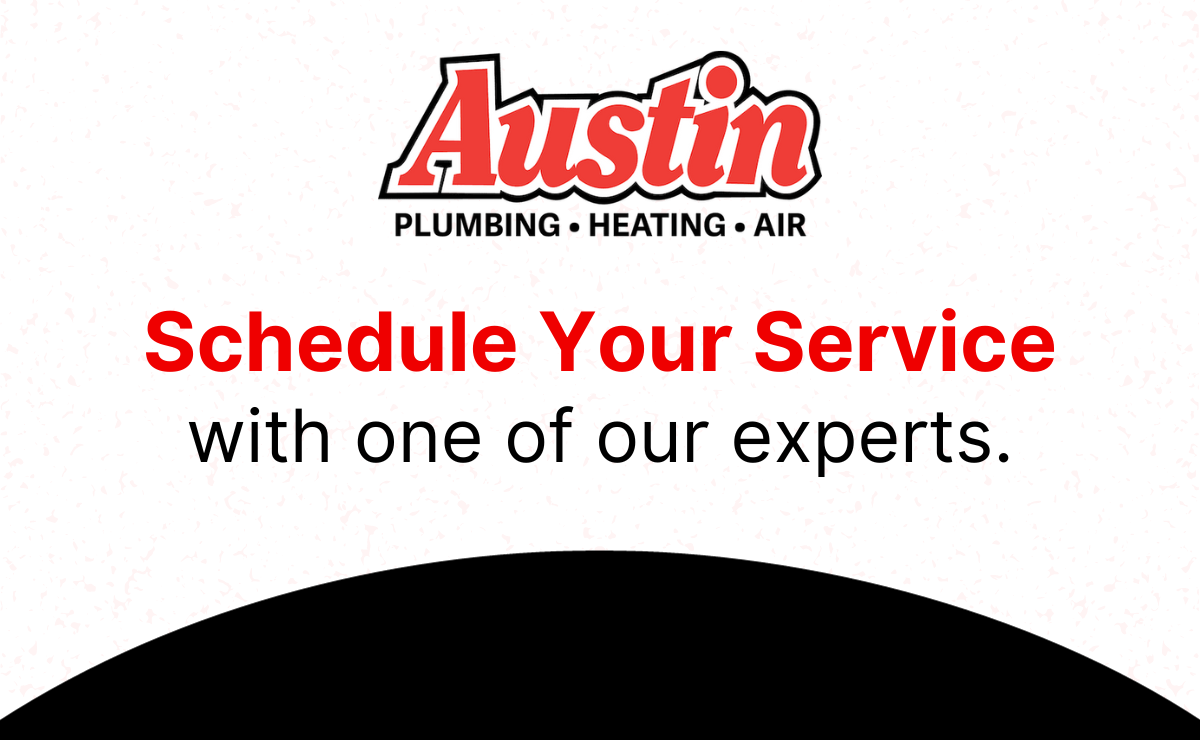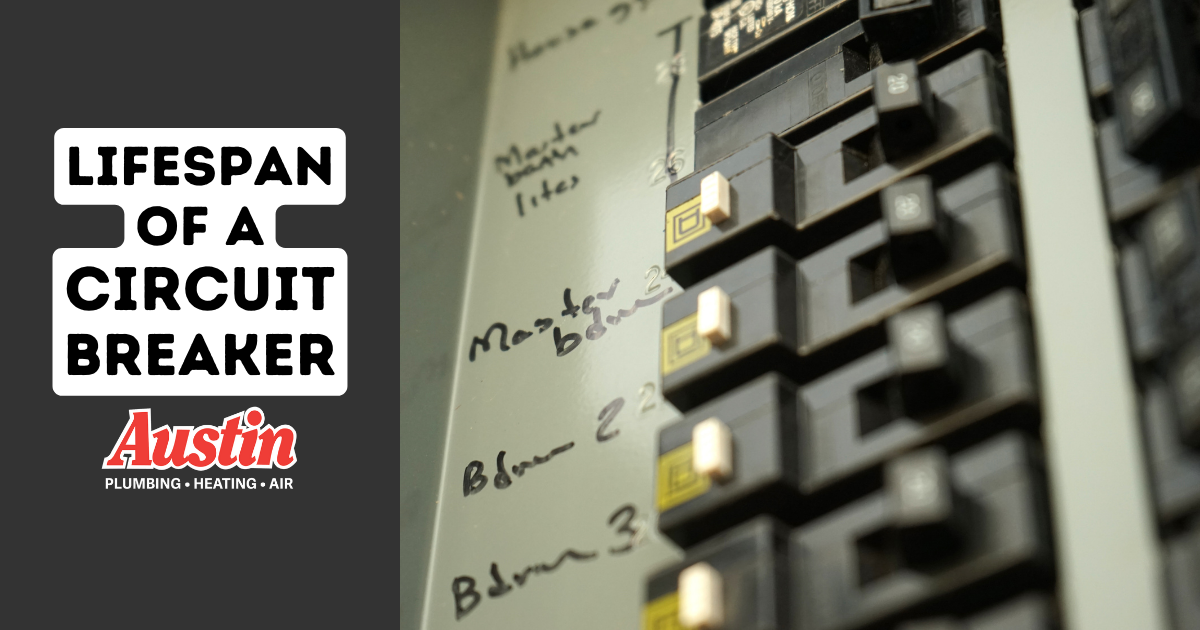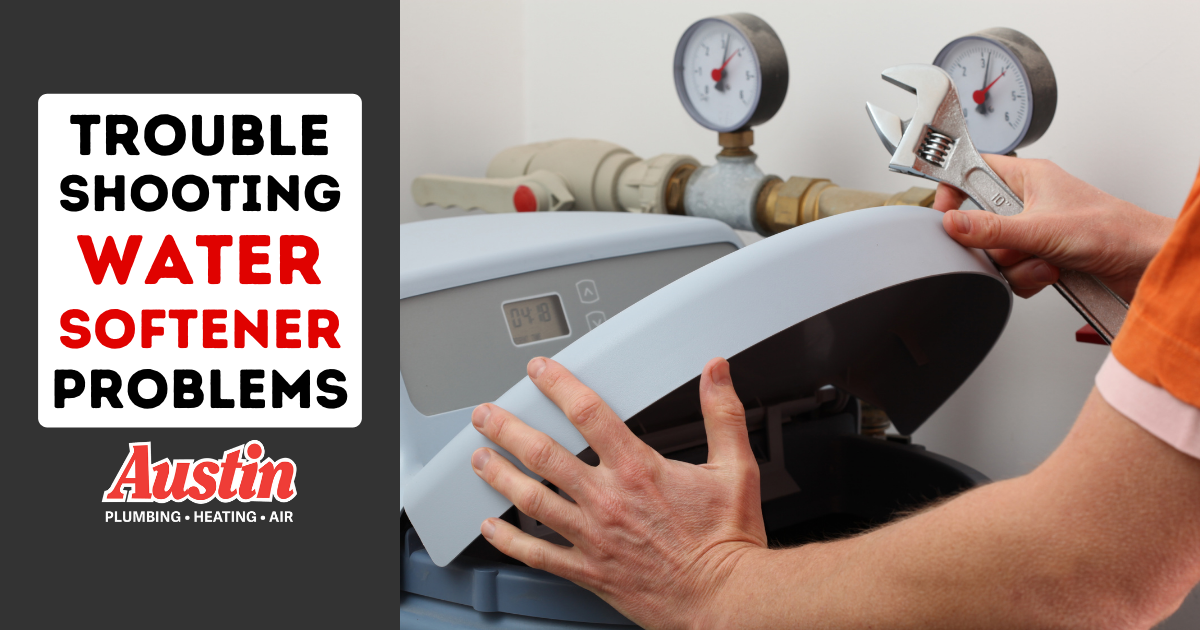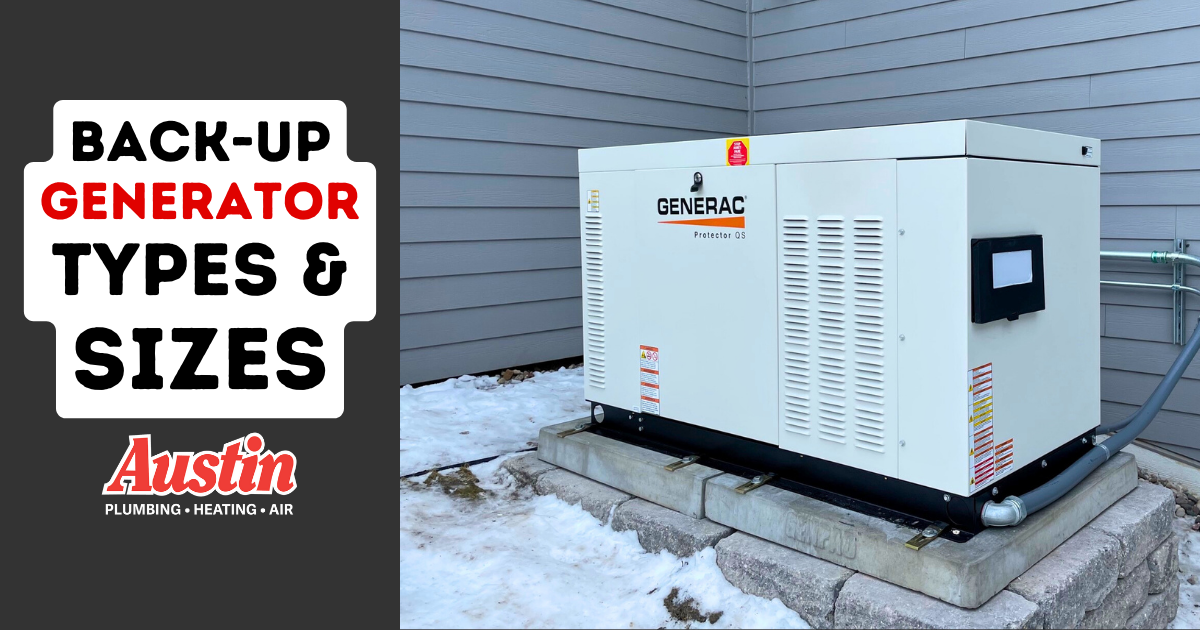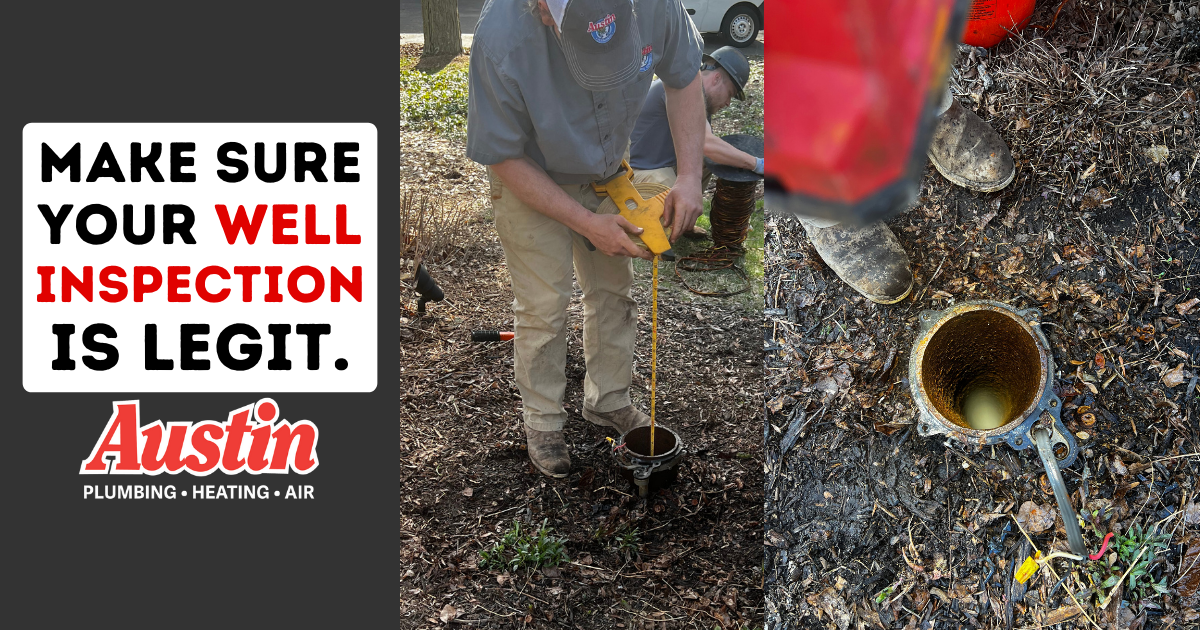6 Most Common Signs Your Furnace System is in Need of Repair
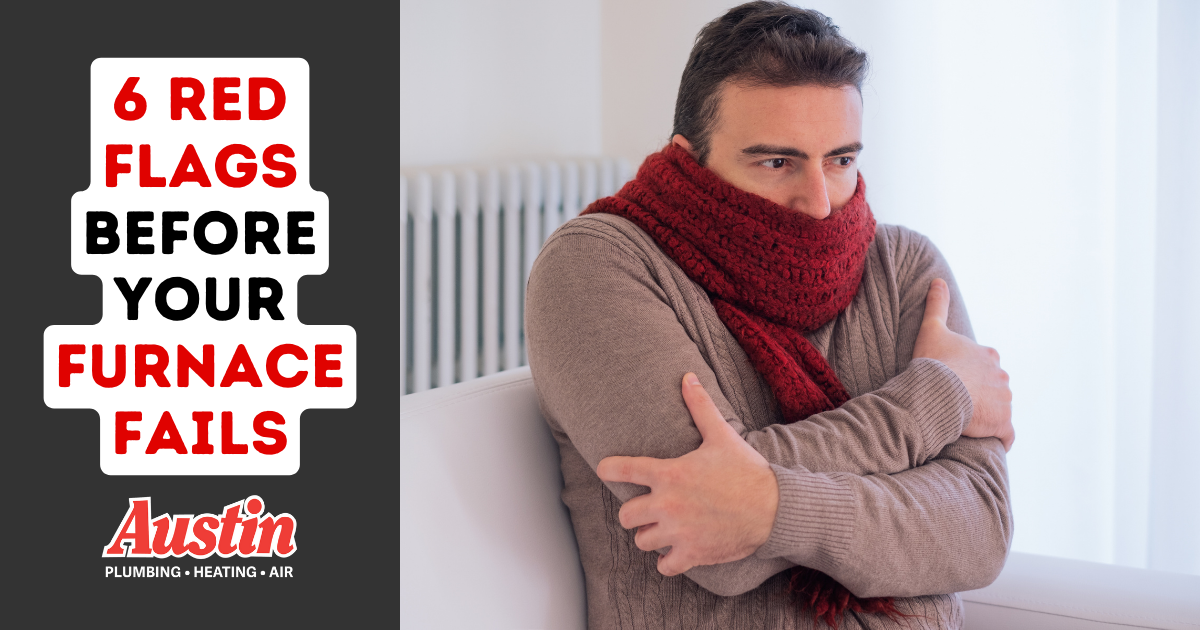
How can you tell if your furnace requires service or repair? Learn the 6 most common signs from our Master Tradesman.
When you’ve been in the heating business for as long as Team Austin, you learn more than a few ways to tell what’s up with a troubled furnace.
This information doesn’t need to be kept secret, though. Every customer ought to know the warning signs–even the subtle ones–of a failing furnace. So we compiled all of them into one page for you.
With the info below, you’re finally out of the woods of anxiously researching without really knowing where to start. Read on and you’ll be able to take decisive action to get your furnace fixed.
Sign #1: Furnace not keeping up with thermostat
If you feel like your furnace is struggling to maintain the temperature you have set on the thermostat, you’re probably right–and there’s likely a deeper problem at play within your heating system.
Keep in mind that this isn’t necessarily limited to furnaces that have totally stopped working. It’s very common to find that the furnace still runs, but stops short of reaching your desired heat output.
Poor “communication” between the furnace and thermostat may stem from a number of sources:
- Plugged or restricted air filters
- Restricted exhaust system
- Clogged or failed secondary heat exchangers
- Malfunctions with the thermostat itself
- Furnace is in need of a tune-up service
- Other issues related to maintenance or configuration
A symptom like this one won’t take care of itself, but is likely to get worse if left alone–especially during the demanding months of winter. At the first sign that your furnace is lagging behind, you should prioritize scheduling a service appointment.
Sign #2: Water leaking from furnace/pooling around the furnace
In high-efficiency furnaces, a byproduct of the heat production process is actually water. Inside the furnace is an intricate drain system designed to collect this condensation and direct it to a drain that exits the house.
The appearance of a leak, often signaled by accumulated water around the base of the heating unit, represents another imminent problem. If left unchecked, it can cause damage to the structure of the home–as well as any electronic systems, leading to things like circuit board failure. If that weren’t bad enough, it can continue to destroy the furnace from the inside-out until it’s beyond repair and needs replacement.
We try to save every furnace that still has a chance of recovery. Our diagnostic process means examining the inner workings of your furnace for additional warning signs, such as:
- Clogged drain traps
- Leaking or restricted internal drain pipes
- External furnace drain restrictions
- Plugged or failed secondary heat exchangers
Sign #3: Loud noises from your furnace
A common symptom of furnace troubles: any changes to the sounds your furnace makes while running. At times, it may sound like an off-balance washing machine; at others, you may hear noises resembling something more like that of a jet engine. If you notice your furnace making a rattling or rumbling noise, or other major changes to the way it typically sounds, you’re not crazy. That alone is usually enough to conclude that something is wrong, and your best bet is to have one of our Furnace Gurus™ out to find the source of the sound.
In response to calls about unusually raucous furnace activity, we get straight to work looking for one or more of the following causes:
- A blower-motor failure
- An off-balance blower wheel
- Issues with the exhaust motor (which can cause squealing sounds)
- Ductwork that’s loose or otherwise in need of repair (often the source of banging or popping sounds)
Sign #4: A “hot” or burning smell emanating from the furnace
Important safety information below
Burnt odors coming through your vents are NOT normal. When this symptom does arise, we can almost always trace it back to melting electrical components inside the furnace. However, the root cause of the melting should be diagnosed quickly by a professional, who can identify the following internal issues:
- Blower motor failure
- Exhaust motor failure
- Furnace control board malfunction
- Issues specific to the wiring
⚠ If you notice a strange smell coming through your furnace’s vents, you should immediately shut off the gas and/or electrical power to the furnace and call for service ASAP.
Sign #5: Smell of natural gas or exhaust venting from the furnace
Important safety information below
These odors may not smell the same as the “burnt” odor mentioned above–but they are equally dangerous and should not be taken lightly. Alarming odors in and around your furnace, or near the exhaust outside, may indicate a number of serious concerns:
- Leaks on gas piping
- Failed or worn gas control valve
- Miscalibration of the furnace combustion sequence
- Plugged or failed secondary heat exchangers
⚠ At the first sign or suspicion of a gas leak, or any other exhaust-related concern, you should immediately contact WE Energies to report the hazard and seek further instruction at the following link: Gas Emergency Help Page
Sign #6: Carbon monoxide alarm sounding
Important safety information below
Carbon monoxide can rapidly infiltrate you home’s air supply if your furnace is suffering from any of the following:
- Cracked heat exchangers
- Venting failures
- Other combustion-related issues
⚠ Evacuate your home and call 911 if your carbon monoxide detector is sounding.
If your gas furnace is determined to be the sole or partial cause of your CO alarm going off, tell us! You can inform Team Austin about the incident and schedule an appointment with us via this online form, but please wait until after emergency services have declared that you are not in any immediate danger. We will come to you and perform a complete evaluation of your furnace to determine the precise source of the exhaust problem. That way, we can prevent the same problem from arising in the future.
Furnace Repair Safety Message
Your furnace combines electricity, natural gas, and carbon monoxide in the combustion process it uses to heat your home. Each of these is seriously dangerous on its own. When all are present at once, the results can be deadly.
If you are not a trained HVAC technician, please do not attempt to service a problematic furnace yourself!
The above warnings are NOT intended to serve as an exhaustive list of potential dangers. As it pertains to 911, the fire department, or We Energies, the instructions provided herein are also NOT comprehensive. Always err on the side of caution when dealing with natural gas, carbon monoxide, or other furnace issues. Even if you’re unsure what’s wrong with your furnace, it is better to be safe than sorry. If your instinct is to call for help, do so immediately!
How to Schedule a Furnace Repair with Wisconsin’s Best & Brightest Tradesmen
Even with the knowledge provided here, dealing with multifaceted HVAC issues like furnace deterioration is easier said than done. Luckily, it’s even easier to get in touch with Austin Plumbing, Heating & Air. Scheduling a service online is simple!
Can’t wait for furnace repairs? Call Team Austin any time at 262-367-3808.
